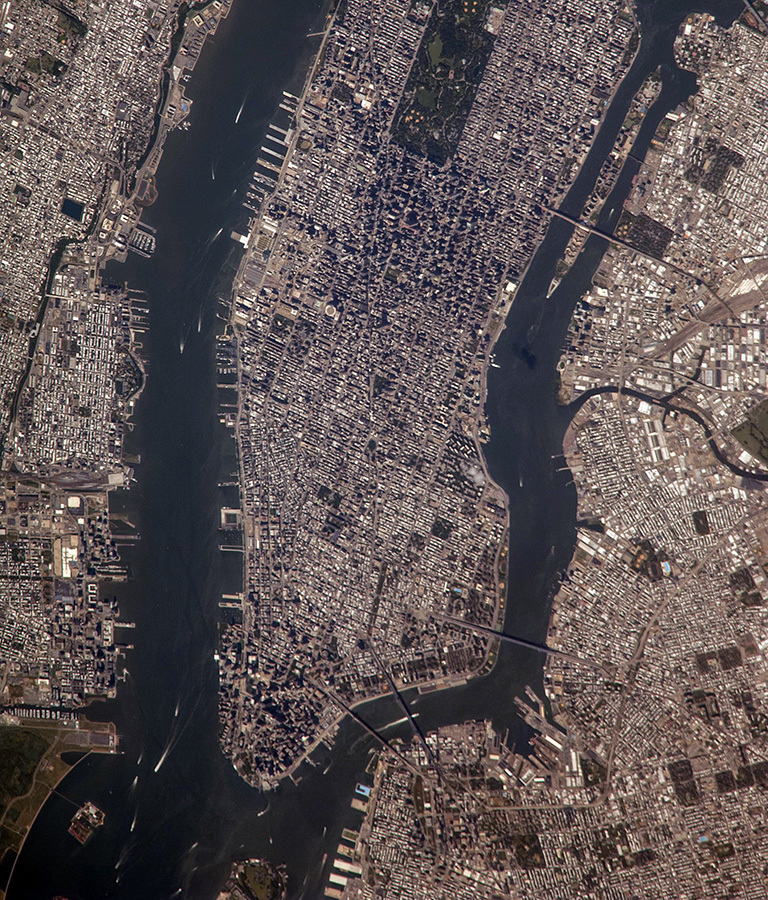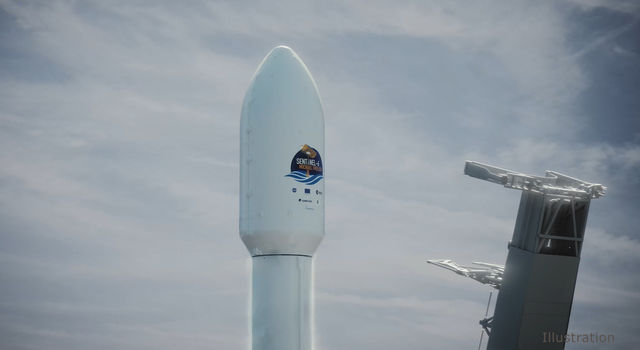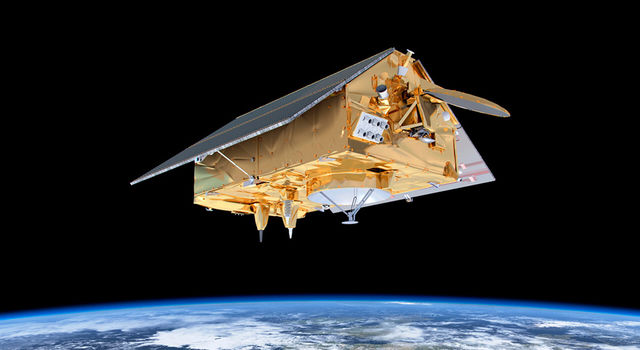Blogs | Earth Right Now | August 7, 2017
The next big question in sea level science
Projecting regional changes
“Sea level scientists have a pretty good grasp on global mean sea level,” said Steve Nerem, a professor in the Aerospace Engineering Sciences Department at the University of Colorado and the team leader for NASA’s Sea Level Change Team (N-SLCT). “It’s the regional sea level change that’s the next big question, the next big step for sea level science,” he added.
Nerem and much of the rest of the N-SLCT were in New York City this July where more than 300 scientists from 42 countries gathered at Columbia University for a weeklong Regional Sea Level Changes and Coastal Impacts Conference. The international conference was organized by the World Climate Research Programme (WCRP), Climate and Ocean – Variability, Predictability, and Change (CLIVAR), and the UNESCO Intergovernmental Oceanographic Commission and was co-sponsored by NASA.
Regional sea level change is more variable, over both space and time, than global sea level change and can diverge by up to 7 inches (20 centimeters) or more from the global mean. Additionally, making regional projections about future sea level differs from making global mean sea level projections. This is due to the fact that different processes contribute to sea level change in coastal regions.
Global sea level rise is caused by thermal expansion of warmer water plus contributions from ice sheets and glaciers. Regional sea level change, especially along coastlines, is influenced by additional factors, including vertical land movements, waves and tides, and winds and storms. So in order to estimate sea level inundation and flood risk, scientists have to understand all the factors that contribute to extreme water levels such as local sea level rise, land subsidence, tides, waves and storm surge.
Members of the N-SLCT understand the importance of studying coastal sea level change and improving the accuracy of regional projections. Ben Hamlington, assistant professor in the Ocean, Earth and Atmospheric Sciences Department at Old Dominion University in Norfolk, Virginia, and upcoming team leader for N-SLCT is serious about understanding sea level.
“The overarching theme of my scientific research,” he said, is “to consistently improve regional sea level projections.” Manhattan, where the conference was held, for example, lies within a few feet of sea level, and furthermore, the U.S. East Coast has some of the highest amounts of projected sea level increase.
“Global means aren’t very useful for someone who’s on the coast of Virginia where I live,” Hamlington said. A main part of the challenge of predicting regional sea level is that what causes the sea level changes and the flooding varies dramatically from place to place. Hamlington described a term called “nuisance flooding,” which is a type of persistent tidal flooding that leads to public inconveniences like road closures and backed-up storm water systems.
“Basically it means your path to work has to change because a certain road is blocked or impassable. You can still get to work, but it might take longer,” he explained. Right now, these nuisance-flooding events occur multiple times a year. But as sea level continues to rise, the nuisance flooding will get more and more frequent and will become even more of a problem. “Where I live, it’s hard to separate the pure science from the applications. With all this flooding, the broader significance of your work is very clear,” he said.
In Norfolk, Virginia, glacial isostatic adjustment (GIA) is around 0.04 inches (1 millimeter) per year, another millimeter per year of subsidence is due to slow subsidence into the Chesapeake Bay Meteor Impact Crater plus ground water pumping. Finally add 0.08 inches (2 millimeters) per year from the ocean rising and “You get the long-term tide gauge rate of relative sea level rise of just lower than 0.20 inches (5 millimeters) per year over the last 100 years. That’s a pretty high rate of sea level rise over a long period of time,” Hamlington explained. “Beyond nuisance flooding, there are also extreme events,” he continued. “During a storm event, you can get several feet of water in some parts of Norfolk.”
Actionable science
Stakeholders and decision makers are the ones driving the demand for improved regional sea level projections, Hamlington continued. “They’re the ones driving the discussion toward regional projections and that’s what’s needed for planning efforts.” These stakeholders include state and local public works officers responsible for infrastructure such as stadiums, roads, seawalls, and dykes plus pumps, water utilities, other utilities, businesses, and coastal inhabitants.
Scientists are responsible for helping society. This is why decision makers and scientists have come together to co-produce actionable science, to discuss how to communicate and collaborate, and to ensure that sea level science is being understood by the adaptation community.
“This is one of the biggest sea level conferences that we’ve had, when everybody who is working in different areas of the field comes together,” said Nerem. There were presentations on a variety of techniques to measure sea level change: tide gauges, measurements in marshes, paleo-sea level, corals, but from the perspective of the N-SLCT, “ We’re really focused on how to use remote sensing, satellite altimetry from Jason-1, 2 and 3 and Gravity Recovery and Climate Experiment (GRACE) combined with GPS measurements to improve regional sea level measurements and projections.”
Nerem’s project targets regions around the globe that are susceptible to inundation but don’t have much measurement infrastructure, such as Bangladesh. Many of these regions do not have detailed digital elevation models or 50 years of tide gauge measurements like we do in the United States. “If we use our satellite techniques and test them in a place we understand, then we can go out where we don’t have that infrastructure and assess future sea level change in those regions.”
The N-SLCT hopes to leverage the satellite observations as much as possible to try to better understand future regional sea level change. This will help decision makers, coastal managers and stakeholders better adapt and prepare for the impacts of sea level rise.
According to Nerem, “We would like to produce a new assessment of future regional sea level change that benefits from the extensive record of satellite measurements collected by NASA.”
Thank you for reading,
Laura
TAGS:SEA LEVEL, REGIONAL SEA LEVEL, GLOBAL SEA LEVEL







